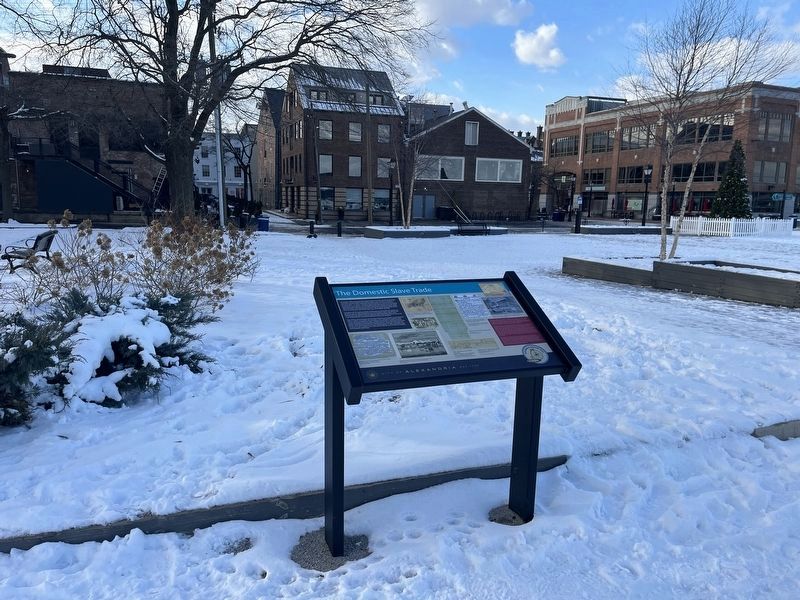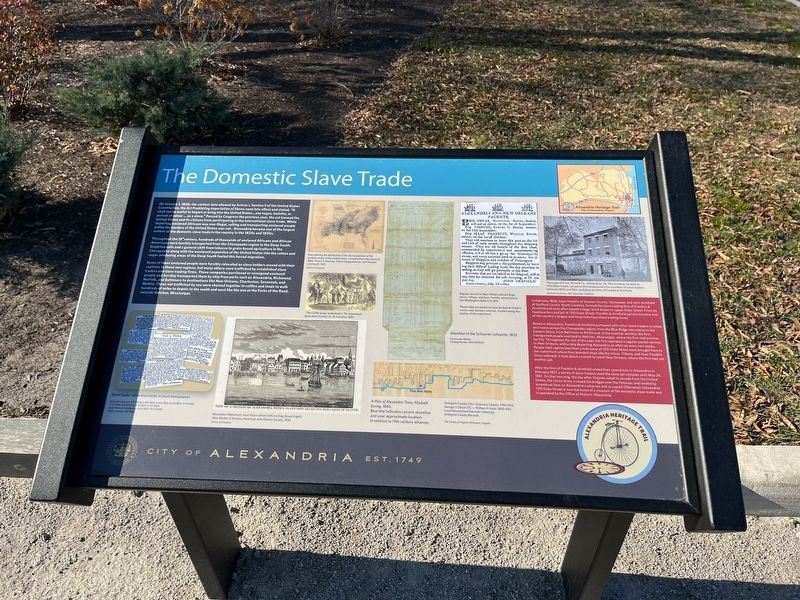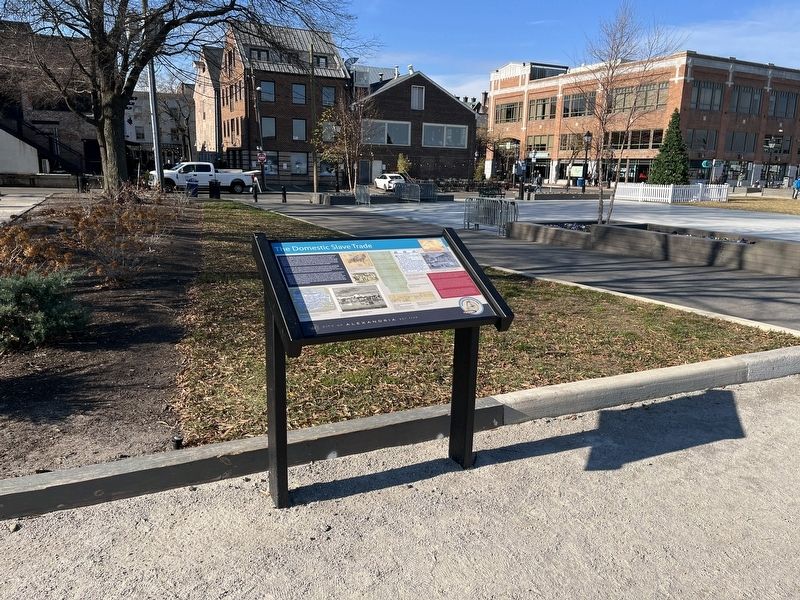Old Town in Alexandria, Virginia — The American South (Mid-Atlantic)
The Domestic Slave Trade
City of Alexandia, Est. 1749
— Alexandria Heritage Trail —
On January 1, 1808, the earliest date allowed by Article I, Section 9 of the United States Constitution, the Act Prohibiting Importation of Slaves went into effect and stated, "It shall not be lawful to import or bring into the United States…any negro, mulatto, or person of colour…as a slave." Passed by Congress the previous year, the act banned the United States and its citizens from participating in the international slave trade. While importing enslaved Africans was now illegal, selling and transporting enslaved people within the borders of the United States was not. Alexandria became one of the largest centers of the domestic slave trade in the country in the 1820s and 1830s.
Throughout the 19th century, hundreds of thousands of enslaved Africans and African Americans were forcibly transported from the Chesapeake region to the Deep South. Depleted soils and a general shift from tobacco to grain-based agriculture in the Chesapeake along with the westward expansion of the United States into the cotton and sugar-producing areas of the Deep South fueled this forced migration.
Some of these enslaved people were forcibly relocated as slave holders moved with their captives to these new regions, but many others were trafficked by established slave traders and slave trading firms. These companies purchased or consigned enslaved people and forcibly transported them by ship from ports such as Alexandria, Richmond, Norfolk, and Baltimore to destinations like New Orleans, Charleston, Savannah, and Mobile. Those not trafficked by sea were chained together in coffles and made to walk hundreds of miles to depots to the south and west like the one at the Forks of the Road, outside Natchez, Mississippi.
In February 1828, Isaac Franklin of Sumner County, Tennessee, and John Armfield of Guilford County, North Carolina, formed the slave trading firm of Franklin & Armfield and soon after leased a large, brick house on upper Duke Street. From its headquarters and jail at 1315 Duke Street, Franklin & Armfield quickly became one of the country's and most notorious slave trading firms.
Based in Alexandria, Franklin & Armfield partnered with other slave traders in cities and towns across the Chesapeake region, from the Blue Ridge mountains to the Eastern Shore, from Baltimore to Richmond. In the summer months, the firm transported people overland to Natchez, Mississippi, where the firm had another facility. Throughout the rest of the year, the firm operated a regular packet service to New Orleans, with a ship departing Alexandria as often as every two weeks. People held captive less than a mile away at 1315 Duke Street were brought here to the waterfront where they boarded ships
After the firm of Franklin & Armfield ended their operations in Alexandria in February 1837, a series of slave traders used the slave jail complex until May 24, 1861. On that morning, the day after Virginia voted to secede from the United States, the Union Army crossed the bridges over the Potomac and landed by steamboat here on Alexandria's wharves and occupied (liberated) Alexandria. 1315 Duke Street is now the home of a museum of the domestic slave trade and is operated by the Office of Historic Alexandria.
Erected 2021 by City of Alexandria, Virginia. (Marker Number 5.)
Topics and series. This historical marker is listed in these topic lists: African Americans • Industry & Commerce • War, US Civil • Waterways & Vessels. In addition, it is included in the Virginia, The City of Alexandria series list. A significant historical date for this entry is January 1, 1808.
Location. 38° 48.225′ N, 77° 2.363′ W. Marker is in Alexandria, Virginia. It is in Old Town. Marker is on Strand Street just south of King Street, on the right when traveling north. Touch for map. Marker is at or near this postal address: 1a Prince St, Alexandria VA 22314, United States of America. Touch for directions.
Other nearby markers. At least 8 other

Photographed By Devry Becker Jones (CC0), January 20, 2024
3. The Domestic Slave Trade Marker
Since the marker was erected, it has been incorporated into the City of Alexandria's African American Waterfront Heritage Trail.
Additional keywords. human trafficking
Credits. This page was last revised on January 21, 2024. It was originally submitted on December 23, 2021, by Devry Becker Jones of Washington, District of Columbia. This page has been viewed 356 times since then and 78 times this year. Photos: 1, 2. submitted on December 23, 2021, by Devry Becker Jones of Washington, District of Columbia. 3. submitted on January 21, 2024, by Devry Becker Jones of Washington, District of Columbia.

